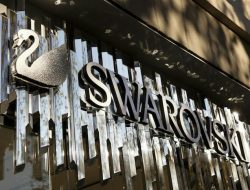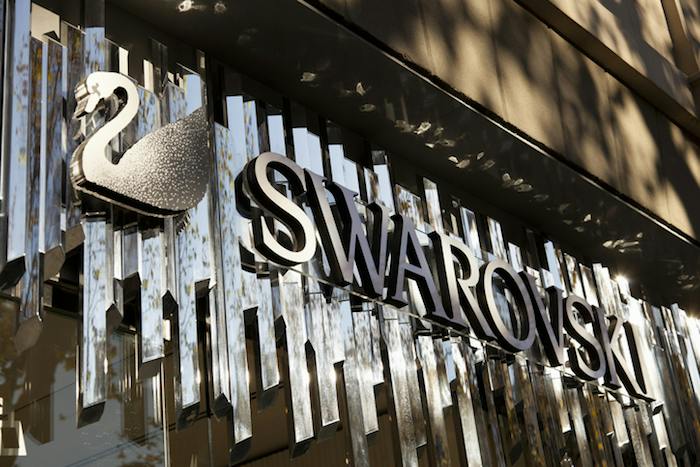How Swarovski Uses Influencers – Diamonds are always synonymous with luxury, making them more expensive than gold. At a time when diamond prices are so astonishing, jewelers have now conquered the Swarovski name. Although they look similar to the naked eye, diamonds and crystals are fundamentally different.
How Swarovski Uses Influencers

swarovskijewelry – However, sometimes this difference is not known to ordinary people and many are so sure that they own Swarovski jewelry that is recognized as diamonds. It is dangerous if done by irresponsible individuals and ultimately the buyer becomes a victim of fraud. You don’t want to experience that, right? The following is an explanation of this world famous crystal.
Swarovski is appreciated because its shine looks as expensive as diamonds. How did it happen? Apparently, the beautiful shine of this crystal, which makes it so sought after by jewelers, is caused by the oxidation of tin. The higher the tin oxidation, the brighter the shine.
The Swarovski factory imitates rainbow sparkles to produce a beautiful shine called chromatic aberration. FYI, chromatic aberration itself is a fancy name for prisms and rainbows. When tin oxide is added to crystal glass, it produces the desired color index of chromatic aberration.
In recent years, Swarovski has modernized its image; shifting focus to a younger, more digitally savvy demographic.
One of the main reasons is that younger consumers are more interested in luxury jewelry, but are reportedly moving away from diamonds. Many readers may remember The Economist’s 2016 article and tweet (below), which sparked much discussion on social media.
tourist attraction
In 2018, Zermatt in Switzerland launched the ‘Matterhorn Glacier Ride’, a state-of-the-art cable car that takes visitors up the Klein Matterhorn. But this isn’t just any cable car. Built by Zermatt Bergbahnen, Switzerland’s largest lift operator, the Glacier Ride also features Pininfarina chairs by designer Ferrari.
In addition, the four fleets have 280,000 Swarovski crystal and glass floor panels. These are known as “Crystal Cabins” and are designed to give visitors an enchanting experience at the top. In addition to the crystals that decorate the outside and inside of the cabin, special lighting reminiscent of a starry sky is installed on the ceiling.
For Zermatt (resort), the cable car is one way to target millennial tourists, but not only skiers or snowboarders. This luxury cable car also targets the 1.5 million Chinese tourists who visit Switzerland every year. According to reports, their numbers have more than tripled since 2011.
This is also a great opportunity for Swarovski to target these affluent consumers, as the brand can capitalize on the sensational nature of the ropeway. Ultimately, advertising investments are one thing, but crystals are at the heart of the luxury experience – a smart and memorable marketing experience.
Unsurprisingly, this is made worse by the fact that Glacier Drive is very ‘Instagrammable’, meaning non-skiers are just as eager to run as visitors to Zermatt’s slopes. As a result, Swarovski also benefits from user-generated content on social media.
Baca juga : Elegant With Luxurious Sparkling Swarovski Jewelry
Campaign for influencers
It seems that not many brands have influencer marketing yet. This is because despite the many challenges the industry faces, there is evidence that it is working. According to a Linquia study, 51% of marketers surveyed reported that influencer content regularly outperforms brand-generated content, especially when it comes to positively attracting new customers.
It also has economies of scale because influencers can create and share content on a much larger scale than a single brand. For Swarovski, influencer marketing has been a successful strategy, reaching a key audience of young consumers and bringing a fresh, modern feel to its content.
Swarovski collaborated with a group of well-known influencers, including model Karlie Kloss, as well as smaller influencers such as fashion blogger Melissa Celestine Koh. By working with the likes of Koh, who has previously created content for a number of affordable and luxury brands, Swarovski is raising awareness around key jewelry retail events such as Mother’s Day and Valentine’s Day.
Recognizing that young consumers may be interested in both affordable retail and luxury goods, the brand was able to openly break the “luxury” stereotype. This is reinforced by the hashtag campaign #brillianceforall, which promotes the idea that everyone can get a little Swarovski sparkle.
Swarovski Uses Influencers
Store Technology
In 2017, Swarovski established an “Innovation Lab” to put retail technology at the forefront of its digital strategy.
Examples of technology implemented so far include augmented reality apps that let users “try on” jewelry and AI-powered image recognition software that helps brand improvement departments speed up the process.
Perhaps more important is brands’ use of in-store technology aimed at increasing engagement and wait times.
In 2018, Swarovski began testing a new store format on London’s Oxford Street, called Forerunner. The store includes several digital features, including AR testing technology and an interactive selfie wall.
Additionally, Swarovski opened another concept store at Sino Ocean Taikoo Li Mall in Chengdu, China. Joan Ng, vice president of marketing, commented to Jing Daily that the proactive exploration of digital channels “has been reflected in our consumer profile – with the increasing number of millennials – so our brand image remains younger and fresher.”
Research shows that in-store digital technology should be high on the agenda for retailers, especially for millennials. In a survey of 2,000 UK consumers conducted by Hitachi Consulting, 69% of respondents aged 24-35 said so. You’re more likely to shop at retailers that enhance the shopping experience with innovative in-store technology
In markets like China and Japan, where technology is more expected (and millennial shoppers are increasingly shopping at luxury retailers), there are even more reasons to invest.

